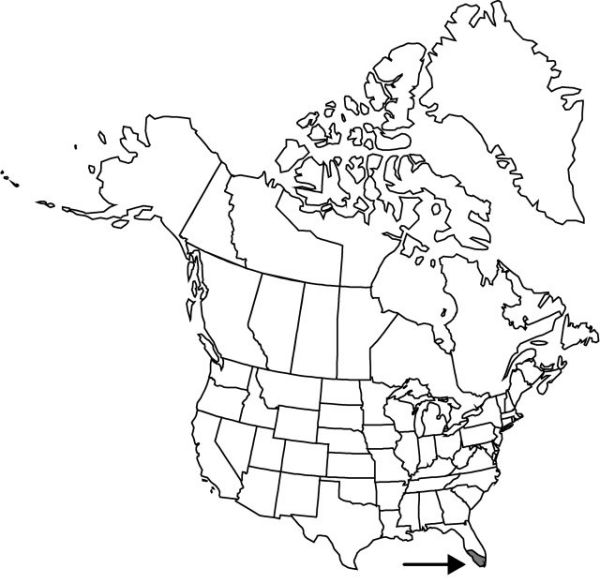Difference between revisions of "Ponthieva brittoniae"
Torreya 10: 90. 1910.
FNA>Volume Importer |
FNA>Volume Importer |
||
| Line 57: | Line 57: | ||
|publication year=1910 | |publication year=1910 | ||
|special status= | |special status= | ||
| − | |source xml=https://jpend@bitbucket.org/aafc-mbb/fna-data-curation.git/src/ | + | |source xml=https://jpend@bitbucket.org/aafc-mbb/fna-data-curation.git/src/f6b125a955440c0872999024f038d74684f65921/coarse_grained_fna_xml/V26/V26_1118.xml |
|subfamily=Orchidaceae subfam. Orchidoideae | |subfamily=Orchidaceae subfam. Orchidoideae | ||
|tribe=Orchidaceae tribe Cranichideae | |tribe=Orchidaceae tribe Cranichideae | ||
Revision as of 19:29, 24 September 2019
Plants 30–50 cm. Roots unknown. Stems subterranean, short. Leaves withering at or during anthesis, 3–12; petiole 1–2.5 cm; blade elliptic to ovate, 4–10 × 1.5–3.5 cm, apex obtuse to acute. Inflorescences: peduncle 26–37 cm, partially enclosed by tubular sheaths, proximalmost larger but not leafy; rachis laxly 20–35-flowered, 10–18 cm; floral bracts lanceolate, clasping base of ovary, 5–10 mm, apex acuminate, pubescent. Flowers: sepals green, adaxially pubescent; dorsal sepal distinct, oblong-lanceolate, 4–5 × 2–3 mm, apex acute to obtuse; lateral sepals obliquely ovate-lanceolate, 4–5 × 2.5 mm, apex acute to obtuse; petals recurved, white, indistinctly clawed, obliquely triangular-ovate, 4–4.5 × 1.5 mm, margins entire, apex acute, pubescent; lip subsessile, white with 2 dark green blotches, obovate, 4.5 × 3.5 mm, apex short-caudate; column white, 2.5 mm; pedicellate ovary 7–9 mm. Capsules 8–13 mm.
Phenology: Flowering Dec–early Mar.
Habitat: Open rocky pinelands
Elevation: 0–20 m
Distribution

Fla., West Indies (Bahamas).
Discussion
Most of the original habitat of Ponthieva brittoniae has succumbed to urbanization. Only two locations are known to exist. One consisted of only a single specimen, and plants of the other have not reappeared since 1986 and may have been destroyed by roadwork (C. McCartney 1997).